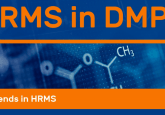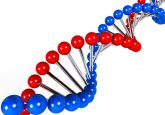2. Do you use HRMS predominantly for quantitative or qualitative analysis or both? Why?

Bertrand Rochat: “During the last 15 years, I have performed quantitative and qualitative analyses of drugs, xenobiotics, endogenous metabolites and peptides. I use low-resolution mass spectrometers (MS) such as triple quadrupole (QQQ) and ion trap MS. Since 2012, I have tested new high-resolution mass spectrometry (HRMS) techniques and realized that, in addition to their first attribution (qualitative, discovery and identification analyses); they could perform excellent quantitative determinations. I spent a few years evaluating if HRMS (at least the ones I tested, Exactive and Q-Exactive MS) could be as efficient as QQQ-MS for quantification. My opinion was clear: HRMS was capable of performing analyses from targeted quantification to untargeted metabolomics [1]. Even if there are always some exceptions, the use of HRMS is a must. I believe that HRMS can be used for most, if not all LC–MS determinations whereas, in the future, low-resolution MS should (will) belong to some niche analyses. Importantly, I realize that HRMS will allow a step further in biomedical analysis because thousands of molecules can be recorded in a single run.”
Diego Cortes: “We are using HRMS for both quantitative and qualitative analysis. The current generation of hybrid HRMS systems offers versatile modes of operation, including full scan, parallel reaction monitoring and survivor SIM. It is difficult to make a blank statement on HRMS use for quantitative or qualitative analysis when there are specific considerations depending on the type of molecule that is being analyzed. For a small molecule, you could get away with using full scan mode for both quantitative/qualitative analyses. However, for large molecules, due to their inherent complexity, including but not limited to multiple charge states and PTMs, generally full scan is used for qualitative analysis and PRM or tSIM for quantitation.”
Graeme Clark: “HRMS is still predominantly used for qualitative studies i.e. metabolite identification and structural elucidation, however early stage ADME screening, PK studies and biotherapeutic modalities have increased the need to apply the technology within a quantitative arena. In all cases, the use of HRMS in an ‘all the data all the time’ environment is facilitating the collection of richer data sets from studies that aid faster, better decision-making processes at a project level.”
Ian Edwards: “The gold standard for small and large molecule bioanalysis is tandem mass spectrometry using triple quadrupole mass spectrometers, which are known for their high sensitivity, high duty cycle and wide dynamic range. Whilst triple quadrupole mass spectrometers are the backbone of the bioanalytical lab today, the latest generation of high-resolution mass spectrometers have quantitative performance approaching that of triple quadrupole mass spectrometers and can be used to perform large molecule bioanalysis. For method development of protein quantification assays using the surrogate peptide approach and HRMS, data-independent acquisition enables all candidate surrogate peptides and their fragments to be detected at high mass resolution, without pre-selection, helping screen efficiently for best performing transitions that can then be transferred to a high sensitivity targeted mode or a triple quadrupole mass spectrometer for routine analysis. In addition, it should be said that HRMS adds flexibility to answer questions of both a quantitative and qualitative nature. Scientists in DMPK groups, not only want to quantify the clearance of a drug, but also understand how it is metabolized. The qualitative capability of HRMS enables analysts to identify and track multiple metabolites without prior knowledge, and this is particularly important when, for example, a biotherapeutic contains non-natural amino acids.”
Scott Summerfield:“The structure identificationof small molecule metabolites is well covered within the spectroscopy department of our company. But no protein handling, immunocapture or large molecule MS skills are centralized there and so the synergy rests within the bioanalytical function to perform the equivalent work on large molecules. In our division immunogenicity and exploratory biomarker support sits alongside bioanalysis so all the necessary skills sets are close to hand.”
Timothy Garrett: “We use HRMS for both, but predominantly qualitative work. Qualitative work allows us to provide a broad overview before setting up a targeted analysis on a smaller set of metabolites, but still using HRMS.”
[1] Rochat B. From targeted quantification to untargeted metabolomics: Why LC-high-resolution-MS will become a key instrument in clinical labs. Trends Analyt. Chem. 81 151–164 (2016).
Our expert opinion collection provides you with in-depth articles written by authors from across the field of bioanalysis. Our expert opinions are perfect for those wanting a comprehensive, written review of a topic or looking for perspective pieces from our regular contributors.
See an article that catches your eye? Read any of our articles below for free.





